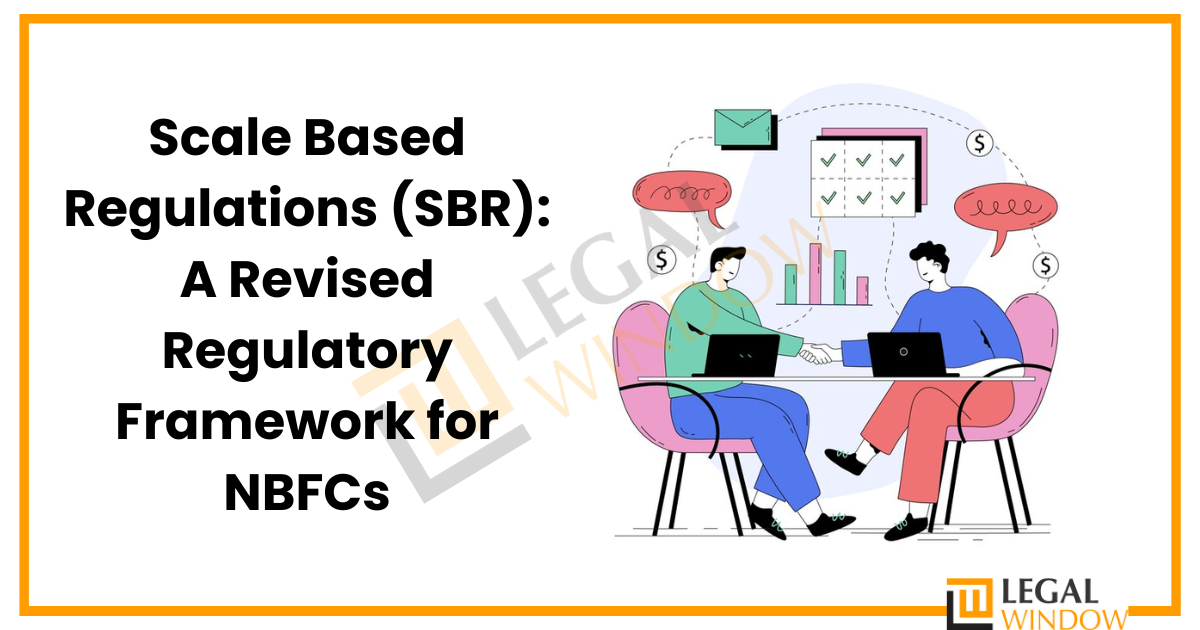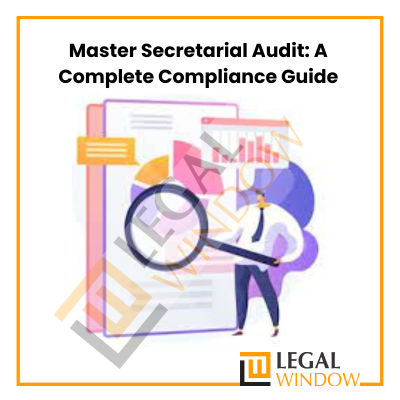Scale Based Regulations (SBR): A Revised Regulatory Framework for NBFCs
- January 10, 2024
- NBFC Registration

The Reserve Bank of India (RBI) issued the (SBR) Scale Based Regulation Guidelines on October 19, 2023, ending the primary division of Non-Banking Financial Companies (NBFCs) into systemically important and non-systemically important NBFCs. Let us know more about Scale Based Regulation Guidelines.
| Table of Contents |
Overview of NBFC
A Non-Banking Finance Company (NBFC) is a registered company under the Companies Act of 2013 that specializes in lending, advances, buying stocks, leasing, installment sales, insurance, and commercial activities. It does not apply to institutions focusing on real estate, industrial, service, or agricultural activities.
An NBFC is also a firm whose primary activity is to receive deposits under any plan or arrangement, either in one lump payment or in installments through contributions or in any other way.
A Glimpse into the Notification
The scale based regulation RBI circular has a new classification scheme in October 2022, which divided NBFCs into four groups: Base, Middle, Upper, and Top.
According to this classification, NBFCs classified as base layer entities had assets under Rs. 1,000 crore, and medium layer entities had assets over Rs. 1000 crore. The strata were classified as either SI or Non-SI, with strata with less than 500 crores being non-SI and strata with more than 500 crores being SI. Under this scenario, NBFCs having assets ranging from Rs. 500 crores to Rs. 1000 crores faced legal ambiguity.
RBI has now released the Master Direction Reserve Bank of India (NBFC Scale-Based Regulation) 2023 via circular dated 19 October 2023, which divides NBFCs into four tiers, designated according to their size and scope of operations, to more effectively address this issue and create a more effective regulatory structure.
Classification of NBFCs in multi-level categories
The Scale Based Regulation Guidelines framework of NBFC classifies non-banking financial companies (NBFCs) as follows-
- Base layer– The non-deposit-taking NBFCs with assets below one thousand crore are included. This tier includes NBFCs engaged in ongoing activities such as NBFC-P2P, NBFC-AA, and NOFHC. This also includes entities without public resources and customer interfaces.
- Middle layer: Despite their size, deposit-taking NBFCs (NBFC-D) are part of this tier. Non-depository NBFCs with assets above ₹ 1000 crore are categorized here along with standalone primary dealers, infrastructure debt funds-NBFCs, CICs, HFCs, and NBFCs-IFCs. Deposit-taking NBFCs, core investment companies, infrastructure finance companies, and housing finance companies can also be middle or upper-tier based on factors.
- Upper Layer: A mix of factors and scoring methodology—70% weighting for parameters and 30% for ratings—are used to identify NBFCs in the top tier. Every year, the criteria are assessed, with March 31 serving as the reference point. Regardless of other factors, the top tier is inherently comprised of the top 10 NBFCs based on asset size.
- Top Layer: If there is a rise in possible systemic risk, NBFCs in the upper tier may be forced to relocate. This stratum is empty right now, thus there is little systemic risk.
Key Highlights on Regulatory Changes
Some key highlights of the regulatory framework of NBFC in India are-
- Asset Classification– SBR Master Direction has revised the asset classification norms for NBFCs. The SBR Master Direction also provides a transition route (applicable only to those NBFCs which currently do not have to comply with the 90-day NPA norm under the SBR Master Direction). If an account is past due by more than 150 days, these NBFCs are required to categorize it as a non-performing asset. The window for designating such accounts inactive will, however, be shortened to 120 days after March 31, 2024, and to 90 days starting on March 31, 2025. In addition, mid-tier NBFCs must set aside 0.40% of their outstanding standard loans against their standard assets. This provision does not count towards arriving at net NPAs with respect to these middle-tier NBFCs.
- Experienced Director on the Board: There must be at least 1 director with relevant experience in a NBFC on the Board of any NBFC.
- NBFCs that do not use public funds and do not have a customer interface: NBFCs that do not have access to public funds and do not have a customer interface are classified as core tier NBFCs under the SBR framework. The SBR Master Directive has exempted all NBFCs from prudential regulations and restrictions for the base layer under Chapters IV and V of the SBR Master Directive.
- Minimum Net Owned Fund: The net owned fund requirement for NBFC-ICC, NBFC-MFI, and NBFC-Factors is increased to INR 10 crores.
Applicability to Middle/Upper Layer NBFCs
The SBR Master Direction states that NBFCs with assets above INR 1,000 crores are subject to regulatory requirements, even if they don’t have such assets on the last balance sheet date.
Middle-Tier NBFCs would have to link exposure limits with Tier I capital. Additionally, Upper-Layer NBFCs will have to follow the direction regarding large exposure framework (similar to banks). Both NBFCs would have to have approved internal limits for sensitive sectors.
Several corporate governance measures have been prescribed for the middle and upper-tier NBFCs such as additional disclosures in financial statements, restrictions on independent directors and key management personnel, introduction of key financial services solutions, etc.
Applicability to Upper-Layer NBFCs
- Listing Obligation: The SBR Master Direction reaffirms the position provided under the SBR framework about the listing of NBFC Upper Layer. Also, according to the SBR Master Direction, upper-tier NBFCs must be listed on the stock exchange within 3 (three) years of their classification as upper-tier NBFCs.
- Capital and Prudential Norms: Common Equity Tier 1 is prescribed by the RBI. The leverage requirement will also be prescribed by the RBI. These NBFCs will be subject to standard asset collateral (similar to banks).
Conclusion
The RBI’s recent experience dealing with mismanaged NBFCs appears to have been the driving force behind the SBR framework’s extensive revisions to the current regulatory ecosystem for NBFCs. All things considered, the SBR framework seems to be a step in the right direction toward bringing responsibility and accountability to the world of shadow banking.
In case of any query regarding the Scale Based Regulation Guidelines, a team of expert advisors from Legal Window is here to assist you at every step. Feel free to reach us at admin@legalwindow.in.
LegalWindow.in is a professional technology driven platform of multidisciplined experts like CA/CS/Lawyers spanning with an aim to provide concrete solution to individuals, start-ups and other business organisation by maximising their growth at an affordable cost. Our team offers expertise solutions in various fields that include Corporate Laws, Direct Taxations, GST Matters, IP Registrations and other Legal Affairs.
Categories
- Agreement Drafting (23)
- Annual Compliance (11)
- Change in Business (36)
- Company Law (148)
- Compliance (90)
- Digital Banking (3)
- Drug License (3)
- FEMA (17)
- Finance Company (42)
- Foreign Taxation (6)
- FSSAI License/Registration (14)
- GST (119)
- Hallmark Registration (1)
- Income Tax (201)
- Latest News (34)
- Miscellaneous (164)
- NBFC Registration (8)
- NGO (14)
- SEBI Registration (6)
- Section 8 Company (7)
- Start and manage a business (21)
- Startup/ Registration (130)
- Trademark Registration/IPR (40)
Recent Posts
About us
LegalWindow.in is a professional technology driven platform of multidisciplined experts like CA/CS/Lawyers spanning with an aim to provide concrete solution to individuals, start-ups and other business organisation by maximising their growth at an affordable cost.








